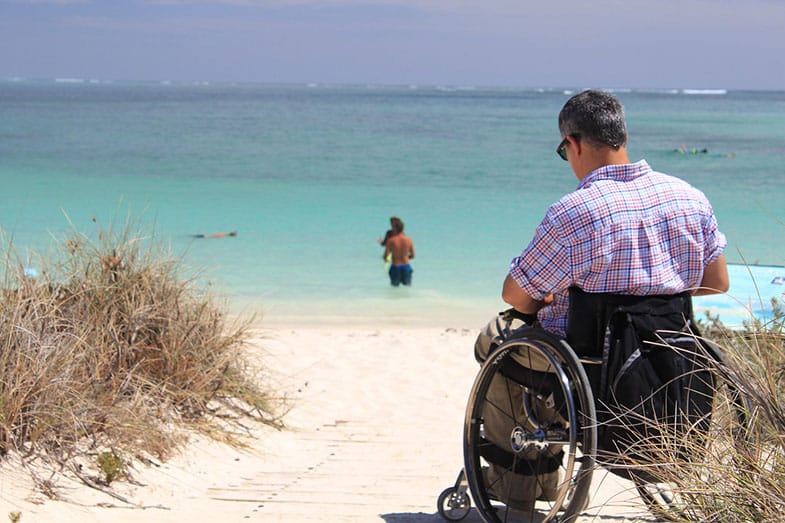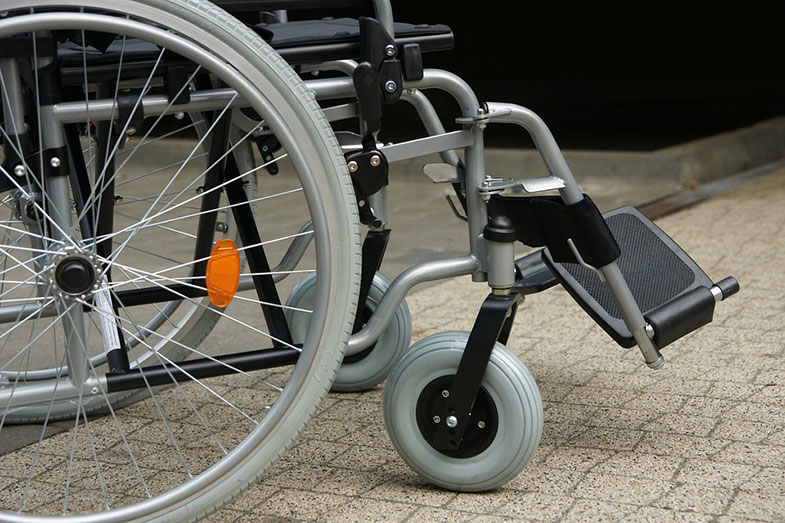Of course, anything is possible in this day and age. Times have changed, and technology has been nothing less than a beneficial instrument for mankind. However, before the skepticism kicks in, how can this be applied for this generation?
Can a disabled person under 55 live in a 55+ community? It depends on the community’s guidelines, but in general, yes. For many communities, there must be at least one person over the age of 55 who lives within the home.
Some may be baffled with this idea, but others have been optimistic. Those confident in seeing a more positive change have been researching the possibilities and paving the way for differently-abled people to achieve their goals in a caring environment. There’s a constant search and reach for methods and programs to further improve the current treatment towards differently-abled people.

Over the years, differently-abled people have been a part of our world – growing in families, working at various businesses, and changing society with their vision and experiences. With these in mind, society has continued to divert away from the stigma that people with disabilities are less capable of living like regular people. Whether a disabled person is in their teens or late 50s, numerous institutions have created programs that suit their needs.
Based on several accounts from young, differently-abled people, their life in aged care draws them closer to depression. They constantly need to belong in the community at large, and truthfully, they deserve fair treatment regardless of their condition. These days, no one has to solely rely on aged or senior care homes and put their life in the care of other people.
Independent Living and Daily Necessities
People often miss the main idea: disabled people are regular people too. They have certain needs like regular people, and these may be entirely new or absurd for some people. However, doesn’t everyone come with his own set of differences?
Physical, occupational, and speech therapists work together to accommodate people with special needs from their early years until they’ve reached their 60s (this is the case with healthcare agencies programs as well).
In previous instances, disabled people at their mid-50s are only a couple of years away from being placed in an aged home or hired a caregiver to personalize a schedule or daily routine to assist them towards an independent life.
These are both practices that we’ve been frequently acquainted with. But in the position of differently-abled people, this isn’t exactly what they had hoped for the rest of their lives.
Ages ago, wheelchairs and other mobility equipment were invented to support people with special needs. To continuously support these people and create a nurturing environment that regards and understands disability inclusion, institutions such as Rutgers have set up group homes. That way, they can transition from their environment as developmentally disabled people to citizens who can casually enjoy the benefits of community living.
Residents in group homes are allowed to live independently: go out to watch movies, play board games with their housemates, and maybe even make plans with friends they meet inside the neighborhood or beyond. It surrounds every differently-abled person with caring, understanding housemates, and the freedom to explore what lies outside the walls of their house.
Inclusion and Growth in the Community
Now, we’ve found a place for your differently-abled loved one; may it be a group home or a residential area where they feel comfortable. There are factors that need to be considered when we’re guiding disabled people in daily living. Said factors will always include our own personal effort and desire to wholeheartedly support these people, encouraging them that there’s just like every other person in this world.

In countries such as the Philippines, differently-abled people qualify for an identification card that indicates their condition and grants them discounts for purchasing medication and groceries.
They are also provided with priority lanes in restaurants and other establishments that require self-service. Regulations such as these are proof that we are continuously striving to include differently-abled people in our daily lives.
Here are some ways you can add to the bigger picture:
- Dismissing negative stereotypes or stigma about differently-abled people (down with the norms)
- Accepting them without any discrimination (fair treatment)
- Creating goods, applications, and installations that would support their independent living (function and design)
- Revising instructions, procedures, and facilities to allow people with disabilities to be able to use these up to the maximum extent (accessibility and convenience)
Influence on the Younger Generation
Early childhood education is the foundation of every person’s perception of the world. Whether you work in a kindergarten, or have kids at home, try adding a couple of new books about disabilities to educate them about it during their early years. Some titles include the following:
1. Sara’s Secret by Suzanne Wanous
Sara is a girl with a brother who has severe disabilities. She says that no one understands that even though her brother can’t feed himself or walk, he’s an important person in her life.
One day, Sara joins a new school and realizes that she doesn’t want anyone to know about her brother. She’s afraid that her schoolmates might tease her the way they did at her previous school.
However, in one class, her teacher discusses people with disabilities. Her classmates describe the special ed children as “slobbery”. Then, their teacher requests that the kids would bring items that would support differently-abled people.
Sara is stuck in a situation where she wants people to stop teasing her but also hopes that the world learns how much she loves her brother.
2. We Can Do It! by Laura Dwight
This book is about real-life stories of children with different disabilities, highlighting their talents and skills. There’s a 5-year old child named Gina who rides a special bike and plays with dollhouses.
Then, there’s a kid named Sarah who can read in Braille and pour her own drink. This storybook is recommended for children aged 3-6 since the kids here are all preschoolers.
3. My Sister, Alicia May by Nancy Tupper Ling
Rachel has a 6-year old sister who has Down’s syndrome. Her name is Alicia May, and she is a lot like other girls. She likes horses and dogs, loves studying about bugs, and enjoys painting her toenails. She may not understand some things, such as how her schoolmates constantly tease her.
Rachel brings out the best in her sister, standing up for her at all costs and expressing her most remarkable qualities. This illustration book will color your child’s world and let them explore the life of Rachel and Alicia.
Representation in children’s materials and toys for disabled kids is of great importance. The process of learning continues, even as teenagers and young adults converse about their interests and careers.
In line with that, there are American establishments and businesses in other countries that employ differently-abled people and guide them in growing as professionals in the industry.
There’s nothing like a good meal or hardworking team to show that disabled people deserve the opportunity to nurture their skills even in the work environment. Here are a couple of businesses that highlight this valuable message:
- Vinny and Bay’s Coffee and Eatery, Florida
- AT&T
- Puzzles Bakery and Café, New York
- Accenture
- Hugs Café, Texas
- The Hershey Company
- SAMPLES, Colorado
- Horizon BlueCross BlueShield of New Jersey
You can dine or purchase goods for a cause, teaching the younger generation that acceptance is the key to growth. Little by little, everyone we’ll be creating safe, optimistic spaces where differently-abled people discover their talents and value their worth.
Final Thoughts
Living with a disability is never a simple path for anyone – may it be the person with disabilities or their loved ones. However, life doesn’t stop there; there’s always a glimmer of hope for a brighter tomorrow where the sun shines beyond one’s tinted glasses and the artistic aspect behind the design of wheelchair ramps.
In line with the title, a 55-year old person with disabilities can invest in his dreams, connect with people of the same interests, and flourish in a bustling city. All this person needs are professional care, a supportive peer group, and access to his daily necessities.
It’s never too late to see a change in the world with your vision and transform it into a grand project that benefits differently-abled people. Even the small acts of kindness can go a long, long way into achieving such a noble goal.
Simple gestures and actions such as saying “no” to discrimination and befriending people with special needs can be your starting point. From there, you’ll be able to pass down a practice, establish a norm, and create a healthy environment where people accept each other’s strengths and weaknesses. Truly, disability is a matter of perception, and differently-abled people need moral support as they pursue their goals and aspirations.
There’s no place for discrimination in this world, and we have the choice to lead the people around us toward the right path. Change starts with us and continues with the actions, choices, and beliefs that we carry with us. You’ll never know how far it’ll go, but it’s about time to set aside negative perceptions towards disabled people and open our arms to the wonderful people they were born to be.
